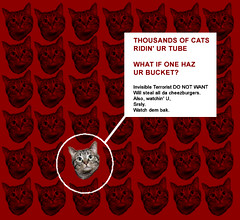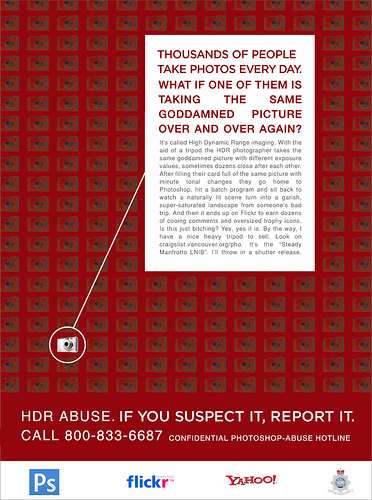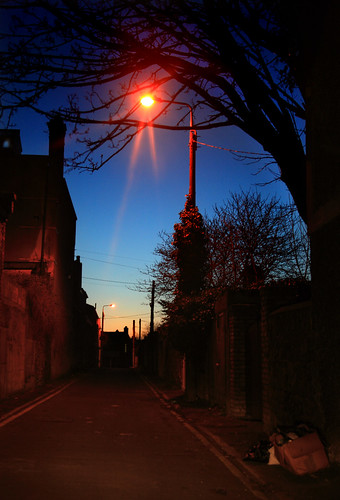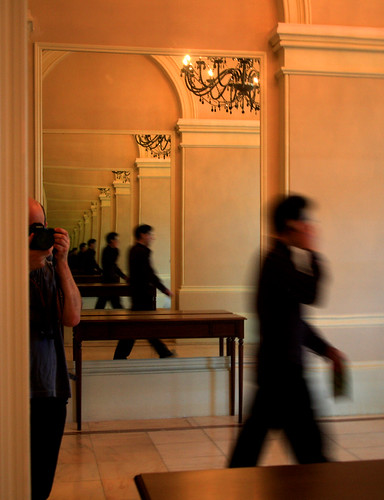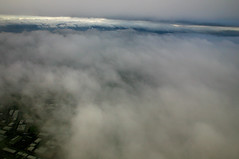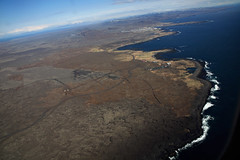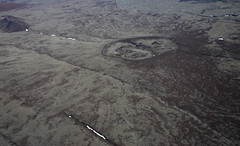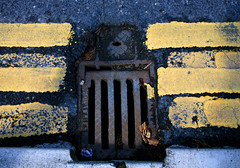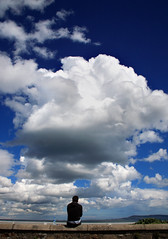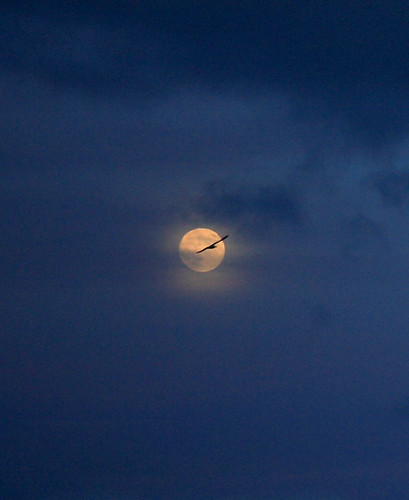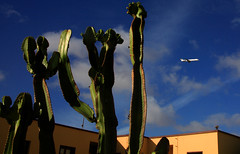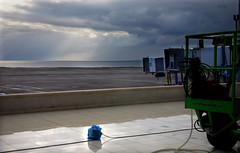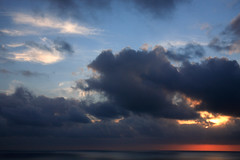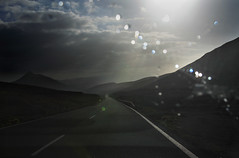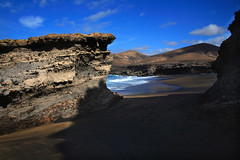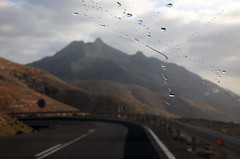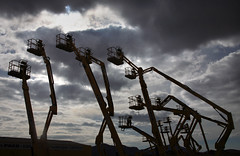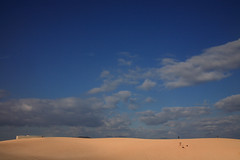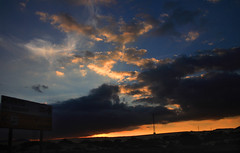
makes me think of my dark
overgrown little back garden,
more moss than grass, the granite wall
shawled in ivy. Enough space
for the washing to do its line-dance
and, slendering upwards,
a tall-storied old ash
keeping time with time.
'Well, that was one way of putting it, hopefully not too obliquely or in too much of 'a worn-out poetical fashion'. I went into more detail on the Poets On Fire forum, when they were discussing 'Englishness' a while back:
Welsh, Irish, English, Celt... I don't think it's really a question of whether such things exist, but rather what they might mean. In a very real sense I believe we are all mongrels, but some of us (such as myself) more so than others.
My mother was born in Belfast but grew up in Burnham on Sea. I was born in London but brought up in middleclass Dublin. My father was Canadian. My wife is part-Jewish. I have lived for periods in the city of my birth (which I have a great affection for), but never doing anything particularly useful, much less cultural: living in crowded lodgings in Golders Green on the dole, or in squats in Camberwell (which was interesting, actually). I have an English brother and quite a few English cousins. I suppose my cultural ID is more Irish than English, though I carried two passports for a while. I like having one foot (or little toe) in the Big Sister island. After all, I speak the lingo; Béarla is my mother tongue.
Perhaps because of my own comfortably muddled roots, I can only understand peoples' anxiety about their cultural background theoretically. I can't get even mildly worried about whether I am more Irish than British or vice versa. I don't think this makes me a better-adjusted human being; I have plenty of other shortcomings, and I am very curious about my family trees' tangled roots. I just find that any tendency to 'national pride' is mitigated by my awareness of how anyone's birth is, in the end, an accident of geography. This latter fact seems to me a bigger and perhaps more important truth. I was delighted to discover I had an English brother, but I'd have been delighted if he was Irish, Jewish, Canadian or Eskimo.
It can be interesting to try to pick through national characteristics. I remember reading Dervla Murphy's 'Wheels Within Wheels', in which she described how her staunchly law-abiding parents took in a young IRA man on the run and provided him with a safe house. She considered subversion and distrust of authority an Irish, as opposed to British, characteristic. It probably was then, in the early half of the last century. But is it still? I don't know. I can sympathise with immigrants, who are understandably insecure, being defensive about their cultural background, (though NOT when that defensiveness becomes offensive and aggressive). But I find it a little strange when well-rooted people metamorphose into flag wavers and drum beaters or attempt to pestle blood and soil into some magical mystery paste.
Louis MacNeice ruminated on Ireland and his Irishness (or lack of it) in various passages in his prose and poems. Here's excerpts from section XVI of his Autumn Journal, published in 1938:
Drums on the haycock, drums on the harvest, black
Drums in the night shaking the windows:
King William is riding his white horse back
To the Boyne on a banner,
Thousands of banners, thousands of white
Horses, thousands of Williams
Waving thousands of swords and ready to fight
Till the blue sea turns to orange.
Such was my country and I thought I was well
Out of it, educated and domiciled in England,
Though her name keeps ringing like a bell
In an under-water belfry.
Why do we like being Irish? Partly because
It gives us a hold on the sentimental English,
As members of a world that never was,
Baptised with fairy water...'
..........................................................
'Why should I want to go back
To you, Ireland, my Ireland?
The blots on the page are so black
That they cannot be covered with shamrock.
I hate your grandiose airs,
Your sob-stuff, your laugh and your swagger,
Your assumption that everyone cares
Who is the king of your castle.
Castles are out of date,
The tide flows round the children's sandy fancy;
Put up what flag you like, it is too late
To save your soul with bunting.
Odi atque amo:*
Shall we cut this name on trees with a rusty dagger?
Her mountains are still blue, her rivers flow
Bubbling over the boulders.
She is both a bore and a bitch;
Better close the horizon,
Send her no more fantasy, no more longings which
Are under a fatal tariff.
For common sense is the vogue
And she gives her children neither sense nor money
Who slouch around the world with a gesture and a brogue
And a faggot of useless memories.'
This was written out of a very different world, of course, in which McNeice could speak of a North
'...veneered with the grime of Glasgow,
Thousands of men whom nobody will employ
Standing at the corners, coughing.
And the street-children play on the wet
Pavement - hopscotch or marbles;
And each rich family boasts a sagging tennis-net
On a spongy lawn beside a dripping shrubbery.'
Were the English all that sentimental? Not when it came down to the brass and bloody tacks; not when they became impatient. These days the street children will have found other things to amuse themselves with, and the rich families other things to boast of than sagging tennis nets.
But certainly there was a truth in MacNeice's lines, stated more boldly than many mid 20th Century Irish writers would have dared. Some of that truth is still relevant and applies to many of the Irish, here and elsewhere, myself included (I never had much of a brogue, but I had some of the gestures alright, and still do).
As for Paddy's Day, I haven't attended the Parade in I don't know how long. Last year was apparently a fiasco, with herds of hyper-aggressive shitfaced young ones terrorising the more docile crowds. So I'll take a back seat as usual. Let the revels get underway with a vengeance, let the poleaxed teenagers piss in the streets, let them turn the clouds to broccoli, the beer to bile; let St. Patrick Adze-Head Moses part the waters of a kelly-green Chicago River for his bogwood chariot drawn by twenty purple and emerald donkeys braying 'Be it so! Be it so!'
Odi atque amo: translates (apparently) as 'to be in love with is also to hate'or 'I hate you and love you'.

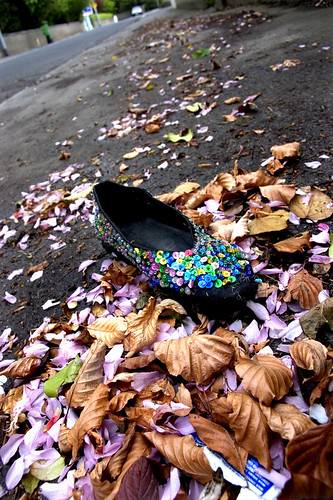

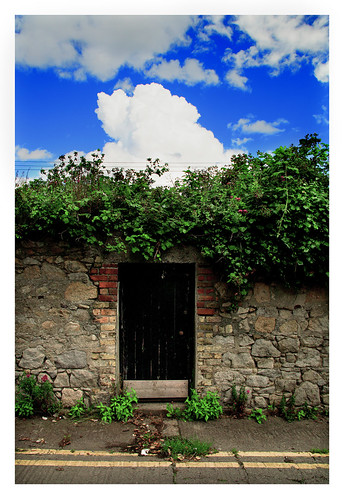

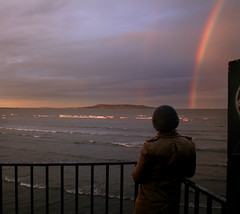


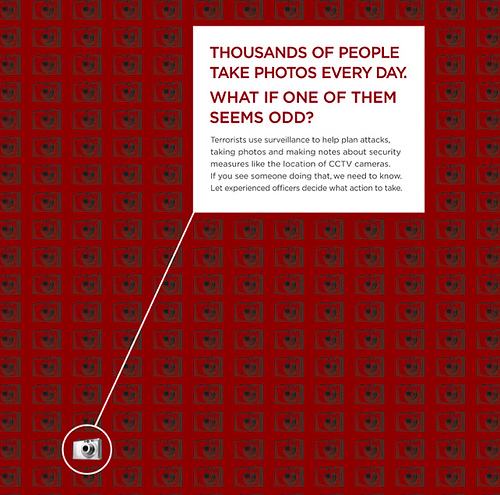 Above is a new poster from the Metropolitan Police, warning the public to watch for 'odd' photographers; part of their counter-terrorist campaign (two other posters with matching graphics focus on houses and mobile phones). Below are two parodies of it, one by LOLcat, the other by an unknown artist.
Above is a new poster from the Metropolitan Police, warning the public to watch for 'odd' photographers; part of their counter-terrorist campaign (two other posters with matching graphics focus on houses and mobile phones). Below are two parodies of it, one by LOLcat, the other by an unknown artist. 